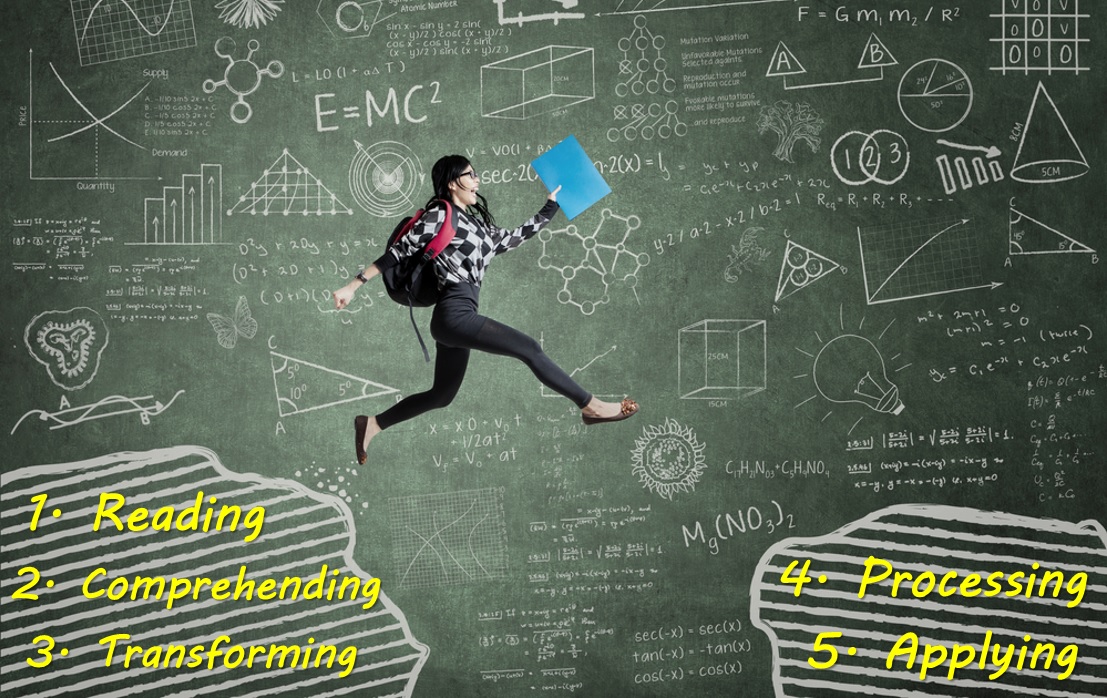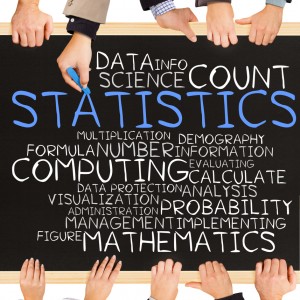“When a problem comes along, you must whip it.”
– Mark Allen Mothersbaugh & Gerald Casale, ‘Whip it’ by ‘Devo’
Why is it that so many students – and often we, as their teachers – struggle with the learning and teaching of mathematical problem solving? If only the answer were as simple as the 1980s hit by Devo suggests!
Most often, as teachers we see our students approach worded and open-ended maths problems with apprehension and confusion, or with a token effort which fails to genuinely engage with the requirements of the task. When a problem comes along, unfortunately our students are often more inclined to ‘skip it’ than to ‘whip it’!
In AMSI Schools’ consulting work in schools across Australia, the issue of helping students cope with maths problem solving raises itself as one of two most ‘frequently asked questions’ (the second is that of differentiating maths instruction… more on that elsewhere!). This article is one of a series which seeks to help teachers understand the nature of mathematical problem solving, why it is important and then how to assist students to develop mathematical problem solving skills.
What is ‘mathematical problem solving’?
In part, the thorny issue of addressing problem solving in maths classrooms both in Australia and elsewhere is caused by unclear definitions.
Many mathematicians would agree that the quintessential ‘go to’ expert on mathematics problem solving was the 20th Century Hungarian-American mathematician George Polya. Polya taught at Stanford University in the 1940’s and wrote the book “How to Solve It: A new aspect of mathematical method”, a general guide for solving both mathematical and non-mathematical problems. Well known for his teaching on methods and strategies for problem-solving, especially in maths, Polya’s bestselling volume has become well known and loved by generations for its clear instructions on stripping away irrelevancies and going straight to the heart of the problem.
According to Polya, problem solving is about making sense of mathematics by examining ‘real’ problems and then guessing, inferring and discovering something new in the process. By ‘real’, Polya did not necessarily mean ‘from the real world’ (although they well may be), but rather questions relating to a subject and which are ‘non-routine’ or new to the student [1]. Mathematical problem solving, therefore, refers to an ‘authentic’ matter or unfamiliar question requiring a solution that has some mathematical dimension to it.
Later in this series on problem solving, we will look at several different types of mathematical problem solving that students might be asked to work on either in the classroom or in real world, contextual situations. These are, in order:
- Worded mathematical problems (sometimes referred to in primary school as ‘story problems’);
- Open-ended maths problems;
- Rich and contextual tasks; and
- Parallel tasks.
There are overlaps in each of the above type of problem solving task, however, later in the series we will discuss the general features of each of these in turn. We’ll also provide examples and suggestions for writing or developing each across several broad grade levels, and provide some tips for helping students tackle each type of problem as well.
Why is problem solving in mathematics important?
At a purely pragmatic level, the answer to this question might be ‘because it’s part of the curriculum’. It is a reality that the Australian Curriculum in Mathematics, and consequently, the state developed syllabi that flow from this, enshrine ‘problem-solving’ as a key mathematical proficiency [2] to be taught across all strands and content areas.
In an address concerning the importance of the introduction of the ‘Common Core’ for mathematics education in the United States, the respected and pre-eminent mathematics education expert and author Dr Jo Boaler of Stanford University made the following observation:
“The world is changing. We no longer need students to just be fast calculators… in fact, technology now does that for us. We need students who can think and develop mathematical models and reason and problem solve…” [3]
Flowing from this, many of the external (and internal) testing and assessment tools with which students’ mathematical achievements are measured are embedded within problem-solving contexts. Many if not most testing items within the numeracy component of the Australian ‘National Assessment Program – Literacy and Numeracy’ (NAPLAN) are expressed as worded problems, many requiring more than one step or calculation process to solve.
Now more than ever, demonstrating maths achievement – even if only narrowly (and insufficiently) measured by the ability to perform satisfactorily in standardised tests – requires the ability to comprehend and then solve problems, rather than to simply perform calculations.
Importantly, the importance of teaching mathematical problem solving flows from its utility in the real world. It could be strenuously argued that without the application of mathematics to the resolution of real world problems, the discipline itself carries little significance [4].
The point regarding the importance of mathematical problem solving to students, whom we are preparing for the real world beyond the walls of the classroom, is made in a recent paper delivered by the Australian Mathematical Sciences Institute to the NSW Mathematics Association Conference:
“Both now and in the future, mathematicians have essential roles in addressing problems and finding solutions in areas such as public health and the control of infectious disease; design and management of public roads, transport and infrastructure; discoveries in molecular biology and breakthroughs in cancer management and viral immunology; environmental, climate and weather event modelling and prediction; advancements in information technology such as voice recognition and robotic intelligence; enhancements in economic management and regulatory market supervision… The list is quite literally endless, as new and emerging fields of technology and science emerge and require the creative and sophisticated application of mathematical logical reasoning, problem solving and predictive modelling.”
… We dare not let (our students) down with a patchwork approach to mathematics curriculum and standards which may, through a lack of a coordinated national resolve, fail to deliver on the essential analytical skills, problem solving abilities and logical reasoning capacities that will equip them to successfully meet these challenges. [5]
The New Zealand Ministry of Education’s ‘NZMaths’ website also provides a detailed and compelling explanation of the importance of problem solving in mathematics, outlining a range of good reasons why (curriculum and examination requirements beside), teachers should incorporate problem solving into their maths programs.
Not least of these reasons is that problem solving is an interesting and enjoyable way to learn mathematics, inevitably creating more positive student attitudes towards mathematics and encouraging students to incorporate the use of mathematical thinking and logic in other areas of their studies, personal interests and lives [6].
So…What seems to be the problem with Problem Solving?
Although it is easy to dismiss our students’ difficulties with problem solving in maths as simply carelessness or a lack of resilience (although both these factors can, and often do, play a part), there are also a range of very valid cognitive reasons for which problem solving can be so hard.
Australian educator Anne Newman (1977) found that when a person attempted to answer standard, written maths questions they first faced a number of successive hurdles. These include:
- ‘Reading (or Decoding)’ obstacles (ie, being able to read the text articulating the problem, including any associated graphics);
- ‘Comprehension’ difficulties (understanding the meaning of the words / graphics and of what is being asked in the task);
- ‘Transformation’ obstacles (working out which part of the problem as articulated constitutes relevant detail, and exactly which mathematical operations to employ to tackle to calculation/s needed);
- Process Skills (“doing the maths” – ie, employing mathematical skills and processes to calculate an answer. Note here that an ‘answer’ is not necessarily a ‘solution’!); and
- Encoding (ie, ‘plugging’ the answer back in to the context of the original question).
Then, to add to the potential for ‘the wheels falling off’, along the way it is always possible for students to make a ‘Careless error’ – an old fashioned, all-too-common ‘boo-boo’! [7].
According to Newman’s ‘Error Analysis’ research, about 50% of student errors occur prior to the ‘processing’ stage of problem-solving – that is, students as commonly make mistakes before they even get to the maths (eg, by misreading the question, confusing relevant with irrelevant detail, overlooking important graphical clues…). Thus, the key to unlocking students’ capacity to successfully engage with mathematical problem-solving is to first ensure they have the skills in place to read, understand and translate the problem into mathematics.
Accessing strategies to assist with worded problems in Maths
There are a range of useful strategies and approaches which may help scaffold students when they are approaching worded and open-ended or complex problems in mathematics. The following six classroom tips present a smattering of ideas for classroom teachers when working with their students on tackling problem solving in mathematics.
1. Presenting Polya.
The quintessential mathematics problem-solving ‘go-to’ text is George Polya’s ‘How to Solve It’, a “perennial best-seller” for students and educators of mathematics alike [8]. Polya was a Hungarian mathematician who taught at Stanford in the 1940’s and who was well known for his teaching on methods and strategies for problem-solving, especially in maths. He wrote “How to Solve It” in 1945 as a general guide for solving both mathematical and non-mathematical problems, describing four stages of problem solving: Understanding, Planning, Analysis and Review (Checking).
Polya’s classic book can be purchased from most decent academic book sellers and from a range of online book sellers. In addition, there are a range of guides and visual prompts that summarise Polya’s problem-solving strategy available on the Internet, such as that from ‘Teaching Paradox’.
2. Visual and Mental Mnemonics
As outlined above, it’s the ‘Understanding’ and ‘Planning’ aspects that many students become ‘stuck’ on, especially as understanding what a question is asking and then planning which steps to take next require abstract thinking skills, as well as several – sometimes numerous – steps to follow. Students often and easily become ‘lost in the detail’ and so many mathematical educators have developed guides and processes to assist students with the ‘unpacking’ of maths problems as well as their solutions, proofs and checks.
Some such strategies are mnemonic in nature, for example, ‘CUBES’ (http://ebi.missouri.edu/wp-content/uploads/2014/02/EBI-Brief-Template-Word-Problem-Mnemonics.pdf). The CUBES strategy requires students to systematically read, interpret and solve worded questions carefully by:
Circling numbers in the text;
Underlining the question (ie, what is being asked of the student);
Boxing key maths words (to identify required operation/s);
Evaluating the mathematical strategy (by writing a number sentence, equation or mathematical strategy); and
Solving and Checking the answer (for example, by applying inverse operations).
This approach very much fits within Polya’s and Newman’s frameworks for understanding and solving problems. A quick Google search on ‘CUBES Problem Solving’ will yield a plethora of posters, online explanations and You Tube-d guides on applying the CUBES strategy in the classroom, more particularly at primary level.
3. ‘Newman’s Prompts’
Referencing Dr Anne Newman directly, classroom teachers might also consider the five suggested ‘significant prompts’ to assist students to work through written problems in the classroom. ‘Newman’s Prompts’ are used often in New South Wales schools and are as follows:
- Please read the question to me. If you don’t know a word, leave it out.
- Tell me what the question is asking you to do.
- Tell me how you are going to find the answer.
- Show me what to do to get the answer. “Talk aloud” as you do it, so that I can understand how you are thinking.
- Now, write down your answer to the question. [9]
Asking these questions to prompt students can also help teachers to diagnose where it is in the problem-solving process that students are ‘coming unstuck’ or making mistakes with written mathematics questions.
4. The Importance of Vocabulary
An important factor to consider when explicitly teaching problem solving strategies such as those outlined above is that of addressing mathematics vocabulary. For example, at the stage at which students encounter the ‘B’ in ‘CUBES’ (“Box the key maths words”) or ‘Prompt 2’ in Newman’s prompts (“Tell me what the question is asking you to do”), is it essential that they are able to recognise key words that will indicate or suggest which mathematical operations that need to be applied. Student familiarity and fluency with mathematics vocabulary in a range of contexts is essential underpinning knowledge in order to begin to achieve success with understanding and interpreting worded problems.
Posters, explicit teaching sessions, maths ‘word walls’ and classroom brainstorming sessions can all be useful for familiarising students with a broad range of vocabulary that might be used in worded problems to point students toward identifying the correct operation – or sequence of operations – to be performed in order to solve the problem. The Mathematics section of the NSW Department of Education and Communities’ ‘School A-Z’ website (http://www.schoolatoz.nsw.edu.au/homework-and-study/maths/maths-a-to-z) provides an excellent starting point for extending students’ operations-related vocabulary.
5. ‘Thinking Mathematically’.
In their seminal 1980s text ‘Thinking Mathematically’ [10], John Mason, Leone Burton and Kaye Stacey provide a practical step-through process for helping older (upper primary and secondary) students deal with mathematical problems. They describe the process of tackling maths questions in three interlocking phases: ‘Entry’, ‘Attack’ and ‘Review’, during each of which students should follow several prompting questions or sub-steps:
ENTRY – What do I know? What do I want? What can I introduce?
ATTACK – Am I stuck? (Go back a step) What can I conjecture? How can I prove it? (‘Justify and Convince’)
REVIEW – Check, Reflect, and Extend.
Each of these phases may lead the problem solver forward to the next step, or indeed may encourage them to go back and repeat the step before, working through both ‘I’m stuck’ and ‘Aha!’ moments in their thinking until a satisfactory solution to the problem has been attained. The ‘Thinking Mathematically’ text is a worthwhile investment for secondary mathematics educators and can be purchased directly from Pearson Education or from Amazon Books.
6. Multiplicity of Methods.
Finally, teaching students to try out a range of methods in attacking a maths problem will enrich their repertoire, encourage resilience, develop all-important logical reasoning skills and demonstrate that there may be more than one way to attack a problem. Problem solving methods in maths can include:
- Making a list;
- Simplifying instructions;
- Looking for a pattern;
- Drawing a picture;
- Making a chart or table;
- Writing an equation;
- Working backwards;
- Looking at simpler examples to review the method;
- Making models;
- Guessing and checking (‘trial and error’);
- Collaborating with others…
For each of the above, try working through an example of a maths problem with your students in which each method might be implemented to help derive a solution – then ask them to see whether they can apply a different method to tackle the same problem.
As for CUBES and Polya, the Internet and sharing sites such as Pinterest are fairly rich sources of ‘problem solving methods’ posters and graphics for the classroom.
In conclusion, what is important to remember about mathematical problem solving is that it takes time, resilience and effort. By its very nature, problem solving is not a ‘quick fix’. Many students who are fluent in mathematics – that is, they know their number facts, have sound calculation skills (partitioning, recombining, compensating…) and remember how to apply order of operations – often struggle when they encounter multi-step or more complex mathematical problems. This is because they are used to achieving ‘quick success’ in mathematics. Having to expend time and, often, to face a series of errors and re-attempts, is unfamiliar territory for them.
Encountering tears, tantrums and task refusal during mathematical problem solving from those students who otherwise might consider themselves the ‘bright mathematicians’ of the class is not uncommon. Be prepared for this. Remind students that ‘practice makes (nearly) perfect’ and that maths problem solving does require resilience and a willingness to work through confusion and uncertainty. In the end, perseverance will win the day! Applying some of the lessons from Carol Dweck’s work on ‘Growth Mindset’ can be really useful for fostering this approach in your students.
Following this article, we will explore open-ended problem solving and ‘rich’ tasks, including using these for alternative assessment in mathematics, and point teachers toward some resources they can use to plan, develop and implement these in their classrooms.
References
[1] McClure, L. (2013), ‘Problem Solving and the New Curriculum’, article on ‘N-Rich Mathematics’, URL: http://nrich.maths.org/10367. University of Cambridge : United Kingdom.
[2] The four underpinning ‘Mathematical Proficiencies’ in the Australian Curriculum (Mathematics) are, in order, ‘Understanding’, ‘Fluency’, ‘Problem-Solving’ and ‘Reasoning’. At AMSI Schools, we would argue that these four proficiencies articulate a sort of continuum of ‘thinking levels’, moving from lower to higher order, and with each step providing the prerequisite for the next. In some states (such as NSW), the skill of ‘Communicating Mathematically’ is added to this taxonomy of cross-mathematical proficiencies. It is important here to note firstly that the understanding of maths concepts and then fluency with those concepts are preconditions for students to begin to solve mathematical problems. Secondly, a learner will have trouble applying mathematical reasoning to new or unfamiliar areas of maths (ie, the understanding of why a maths concept, law or theorem works or makes sense) before she or he has developed the skill of unpacking, solving and resolving maths problems.
[3] Boaler, J. (2014), ‘Why Students in the US need Common Core Math’. YouTube clip – URL: https://www.youtube.com/watch?v=pOOW0hQgVPQ. Accessed 07/09/15.
[4] Many pure mathematicians, such as G.H. Hardy, will disagree here. In his ‘Apology’, Hardy argued that because science can be used for evil as well as good ends, the ‘remoteness’ of pure (theoretical) mathematics from ‘ordinary human activities’ (ie, applications and real-world problems and applications) justifies it’s value alone as a ‘gentle and clean science’. Hardy viewed applied mathematics as an inferior and at times contemptible pursuit – see Hardy, G.H (1940), ‘A Mathematician’s Apology’, Cambridge : Cambridge University Press.
[5] Garrett, M. (2015), ‘When is a beer not a beer? An Interstate ODDyssey’. Paper presented to the 2015 Annual Conference of the NSW Mathematics Association. URL: https://calculate.org.au/2015/10/12/when-is-a-beer-not-a-beer-and-what-is-has-to-do-with-mathematics-education-in-australia/ . Australian Mathematical Sciences Institute : Melbourne University, Australia.
[6] New Zealand Maths (2010), ‘Why Teach Problem-Solving?’ Online article, from ‘NZMaths’ website, URL: http://nzmaths.co.nz/why-teach-problem-solving, accessed 18/03/2016. New Zealand Ministry of Education : Wellington, New Zealand.
[7] NSW Department of Education & Communities (2011), ‘Newman’s Prompts: Finding out why students make mistakes’. Online article, NSW DEC Curriculum Support Directorate. URL: http://www.curriculumsupport.education.nsw.gov.au/primary/mathematics/numeracy/newman/index.htm. Accessed 18/03/16. NSW Department of Education & Communities : Sydney, Australia.
[8] Motter, A. (Date uncertain), ‘George Polya’. Online article, in ‘math.wichita.edu’. URL: http://www.math.wichita.edu/history/men/polya.html. Accessed 10/04/16. Wichita State University : Kansas, United States.
[9] NSW Department of Education & Communities (2011), ‘Newman’s Prompts: Finding out why students make mistakes’. Online article, NSW DEC Curriculum Support Directorate. URL: http://www.curriculumsupport.education.nsw.gov.au/primary/mathematics/numeracy/newman/. Accessed 18/03/2016.
[10] Mason, J., Burton, L. and Stacey, K. (1985), ‘Thinking Mathematically’. Pearson Education : Essex, United Kingdom.






